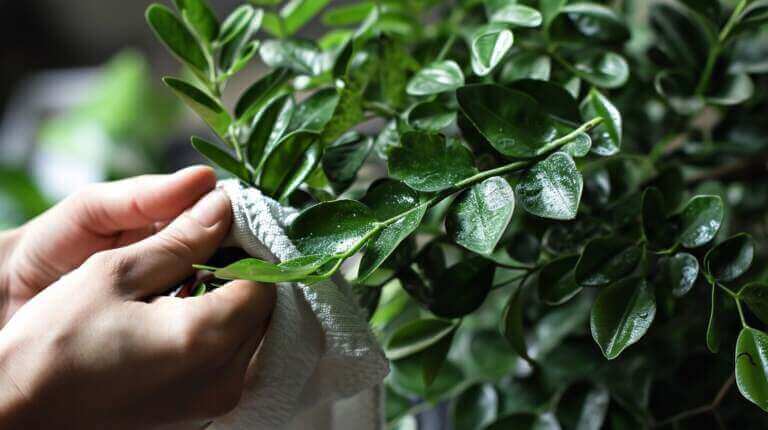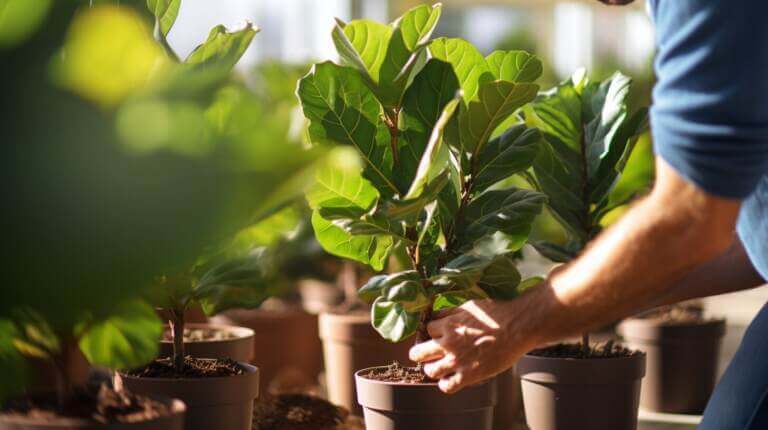Welcome to my article on croton varieties! Crotons are tropical plants that are beloved for their vibrant and multicolored foliage. With over 100 varieties to choose from, each with its own unique leaf shapes and colors, crotons are a fantastic choice for adding a splash of color and visual interest to any garden. In this article, we will explore some popular croton varieties, including the Gold Dust croton, the Petra croton, and the Mammy croton.
Key Takeaways:
- Crotons are tropical plants known for their vibrant and multicolored foliage.
- There are over 100 varieties of crotons, each with its own unique leaf shapes and colors.
- The Gold Dust, Petra, and Mammy crotons are popular varieties known for their distinct characteristics.
- Crotons add a splash of color and visual interest to any garden or indoor space.
- Stay tuned to learn more about each variety and discover which one suits your gardening needs!
Zanzibar Croton: A Great Contrasting Plant
The Zanzibar croton is a visually stunning variety that adds a touch of vibrancy and contrast to any garden or indoor space. Its multicolored narrow leaves feature shades of green, red, purple, orange, and yellow, creating a striking display of contrasting hues. This unique foliage makes the Zanzibar croton a popular choice for those looking to add a pop of color to their surroundings.
This croton variety is versatile and can thrive both indoors and outdoors. It can grow to heights of 3-4 feet, making it an excellent choice for filling in empty spaces or adding height to your plant collection. The Zanzibar croton prefers bright indirect light, so placing it near a window or in a well-lit area will ensure its optimal growth.
Whether you’re looking to create a vibrant garden or want to brighten up your home or office, the Zanzibar croton is a fantastic choice. Its contrasting colors and unique foliage will undoubtedly make it a standout feature in any setting.
| Key Features | Care Tips |
|---|---|
| Contrasting colors: green, red, purple, orange, and yellow leaves | Requires bright indirect light |
| Height: 3-4 feet | Keep soil moist but not waterlogged |
| Grows well indoors and outdoors | Regularly mist the leaves to increase humidity |
With its captivating colors and ability to thrive in various environments, the Zanzibar croton is a must-have for any plant enthusiast. Its contrasting foliage will add visual interest and bring life to any space, creating a stunning display that is sure to impress.
Yellow Iceton Croton: A Pop of Yellow
The Yellow Iceton croton is a stunning variety that adds a vibrant pop of yellow to any garden or indoor space. With its mid-green foliage and lush yellow variegation, this croton is a true standout plant in any collection. It can reach heights of 3-4 feet, making it a great option for adding vertical interest to your garden.
One of the advantages of the Yellow Iceton croton is its versatility. It can be grown both indoors and outdoors, depending on your preferences. When planted indoors, it brings a touch of nature into your living space, brightening up the room with its colorful foliage. Outdoors, it thrives in full sun to partial shade, making it suitable for a variety of garden conditions.
When caring for the Yellow Iceton croton, it’s important to provide it with well-draining soil and regular watering. Avoid overwatering, as it can lead to root rot. This croton variety also benefits from occasional pruning to maintain its desired shape and promote healthy growth. With proper care, the Yellow Iceton croton will continue to adorn your garden or indoor space with its beautiful yellow leaves for years to come.
Victoria Gold Bell Croton: Distinct Leaf Structure
The Victoria Gold Bell croton is a fascinating variety known for its unique leaf structure. Its leaves dangle gracefully from the plant, creating an elegant and eye-catching display. The distinct leaf structure of this croton adds an element of intrigue and artistic flair to any garden or indoor space.
One of the key features of the Victoria Gold Bell croton is the range of colors its leaves can exhibit. Depending on the light levels they are exposed to, the leaves can take on shades of orange, red, green, or even a mix of several colors. This color-changing ability makes the Victoria Gold Bell croton a dynamic and ever-changing plant that never fails to impress.
To ensure the health and vibrancy of the Victoria Gold Bell croton, it is important to provide the right conditions. This variety thrives in bright, indirect light, making it well-suited for spaces with ample natural light. However, it should be protected from direct sunlight in the summer, as excessive heat can cause damage to the leaves.
In terms of size, the Victoria Gold Bell croton can grow up to a height of 3-4 feet, making it a suitable choice for medium-sized gardens or as an indoor potted plant. It is important to note that this variety is sensitive to hot and cold air, so it should be placed in a location where it can avoid exposure to extreme temperatures.
Overall, the Victoria Gold Bell croton is a stunning addition to any plant collection. Its distinct leaf structure, color-changing abilities, and elegant dangling leaves make it a standout variety that will captivate and delight anyone who encounters it.
Oakleaf Croton: Tri-Lobed Leaves in Vibrant Shades
The Oakleaf croton is a stunning variety known for its distinctive tri-lobed leaves that come in a vibrant array of colors. With shades of burgundy, red, green, orange, and yellow, this croton adds a pop of color and visual interest to any space. Whether planted in a garden or kept indoors, the Oakleaf croton is sure to captivate with its intricate leaf structure.
This variety of croton thrives in well-draining soil and prefers to be watered regularly but not excessively. It is essential to provide the Oakleaf croton with bright, indirect light to maintain its vibrant foliage. Whether placed on walkways or near a good light source indoors, this croton will make a statement with its eye-catching colors and intriguing patterns.
To fully appreciate the beauty of the Oakleaf croton, a close look at its tri-lobed leaves reveals the intricate patterns and stunning shades. The varying colors and lobed shape of the leaves set this croton apart from other varieties, making it a standout choice for any garden or indoor space. The Oakleaf croton’s vibrant shades and unique leaf structure are sure to add a touch of sophistication and charm to any botanical collection.
Key Features of the Oakleaf Croton
- Tri-lobed leaves in shades of burgundy, red, green, orange, and yellow
- Thrives in well-draining soil
- Requires regular watering, avoiding excessive moisture
- Prefers bright, indirect light
- Eye-catching colors and intricate leaf structure
Table: Comparison of Croton Varieties
| Croton Variety | Leaf Shape | Leaf Colors | Height | Light Requirements | Indoor/Outdoor |
|---|---|---|---|---|---|
| Gold Dust | Oval | Green with yellow spots | Up to 3 feet | Bright indirect light | Both |
| Petra | Wide, elongated | Red, orange, yellow | Up to 5 feet | Bright light | Both |
| Mammy | Curved, elongated | Red, orange, yellow | Up to 6 feet | Bright light | Both |
| Zanzibar | Narrow | Green, red, purple, orange, yellow | Up to 3-4 feet | Bright indirect light | Both |
| Yellow Iceton | Oval, pointed | Mid-green with yellow variegation | Up to 3-4 feet | Full sun to partial shade | Both |
| Victoria Gold Bell | Dangling | Shades of orange, red, green, or red | Up to 3-4 feet | Protected from direct sunlight | Both |
| Oakleaf | Tri-lobed | Burgundy, red, green, orange, yellow | Up to 3-4 feet | Bright indirect light | Both |
| Mother and Daughter | Long, narrow with small leaflets | Deep green to deep purple with yellow or ivory dashes | Varies | Dappled shade | Both |
Mother and Daughter Croton: Interesting Leaf Structure
The Mother and Daughter croton is a fascinating variety that captivates with its unique leaf structure. The long, narrow leaves gracefully taper and end with a delicate point, giving the impression of holding another small leaflet. This distinctive feature sets it apart from other croton varieties, attracting attention and admiration.
With deep green to deep purple colors, the leaves of the Mother and Daughter croton add elegance to any garden or indoor space. They are adorned with small yellow or ivory dashes, creating a beautiful contrast against the darker hues. The combination of colors and patterns on the leaves showcases nature’s creativity, making this croton an exceptional choice for plant enthusiasts.
The Mother and Daughter croton thrives in dappled shade, making it an ideal addition to areas with filtered sunlight. Its preference for indirect light allows it to flourish while providing an interesting visual element to spaces such as shaded gardens, patios, or indoor areas. With its intriguing leaf structure and striking colors, the Mother and Daughter croton brings a touch of sophistication to any botanical collection.
FAQ
What are croton varieties?
Croton varieties are different types of tropical plants known for their vibrant, multicolored foliage. There are over 100 croton varieties, each with its unique leaf shapes and colors.
What are some popular croton varieties?
Some popular croton varieties include the Gold Dust croton, the Petra croton, and the Mammy croton.
How tall can a Zanzibar croton grow?
A Zanzibar croton can grow up to 3-4 feet tall.
Can Zanzibar croton be grown both indoors and outdoors?
Yes, Zanzibar croton can be grown both indoors and outdoors.
Where does the Yellow Iceton croton thrive?
The Yellow Iceton croton thrives in full sun to partial shade.
What is unique about the Victoria Gold Bell croton?
The Victoria Gold Bell croton is known for its unique leaf structure, with leaves that dangle off from the plant.
What colors does the Oakleaf croton come in?
The Oakleaf croton showcases tri-lobed leaves in shades of burgundy, red, green, orange, and yellow.
How does the Mother and Daughter croton look?
The Mother and Daughter croton features long, narrow leaves that end at a point and give the appearance of holding another small leaflet.







